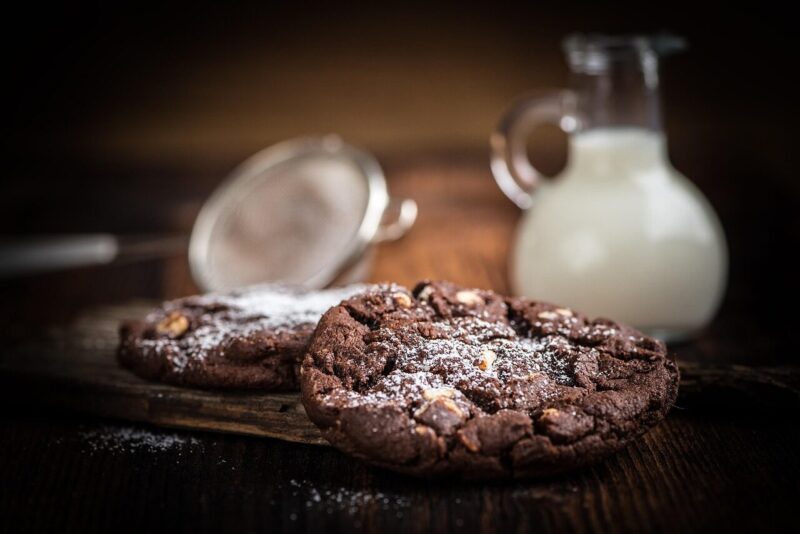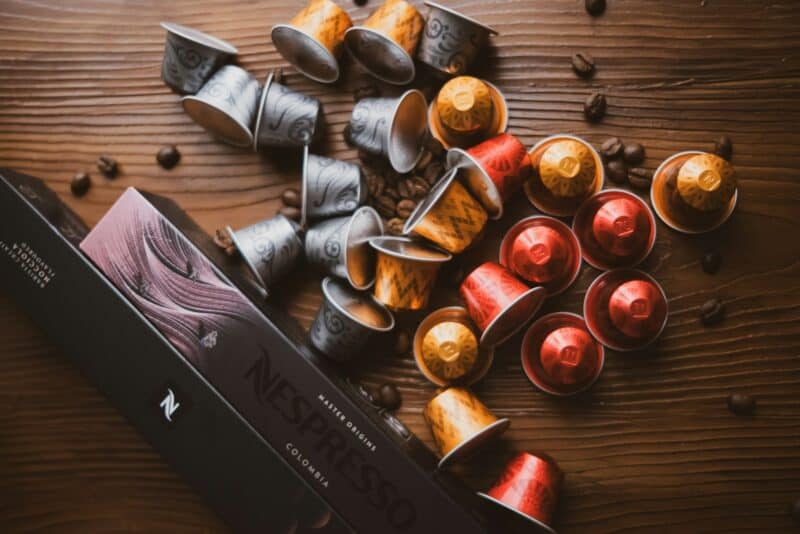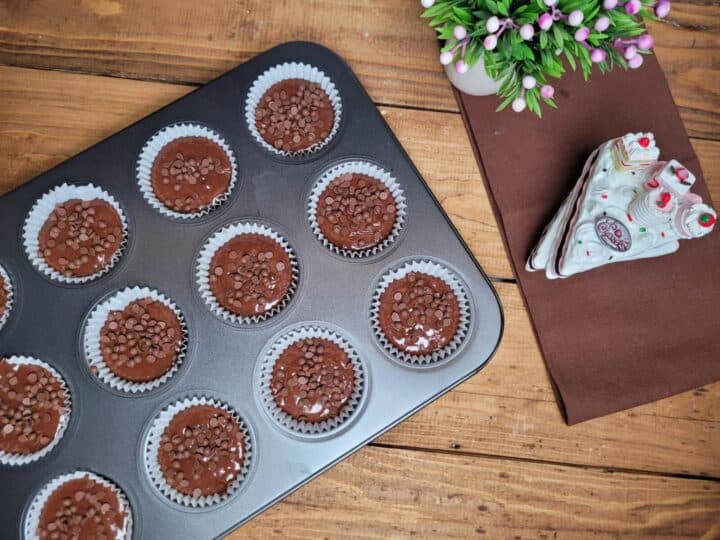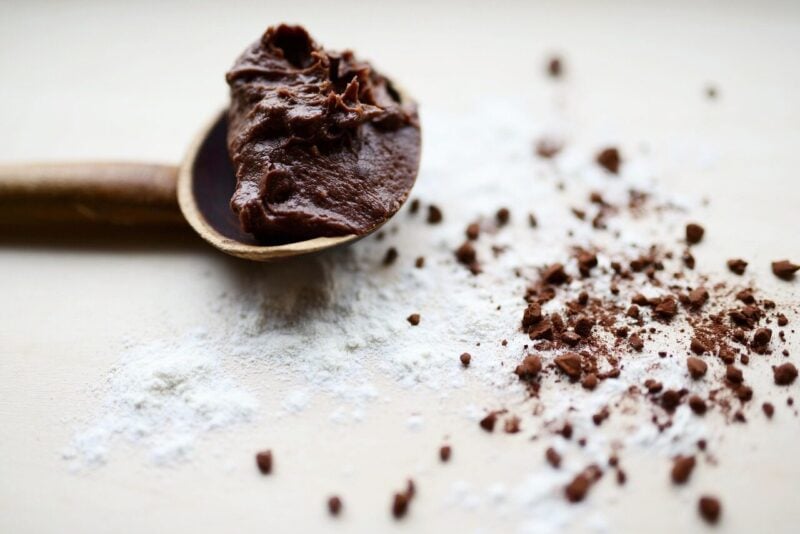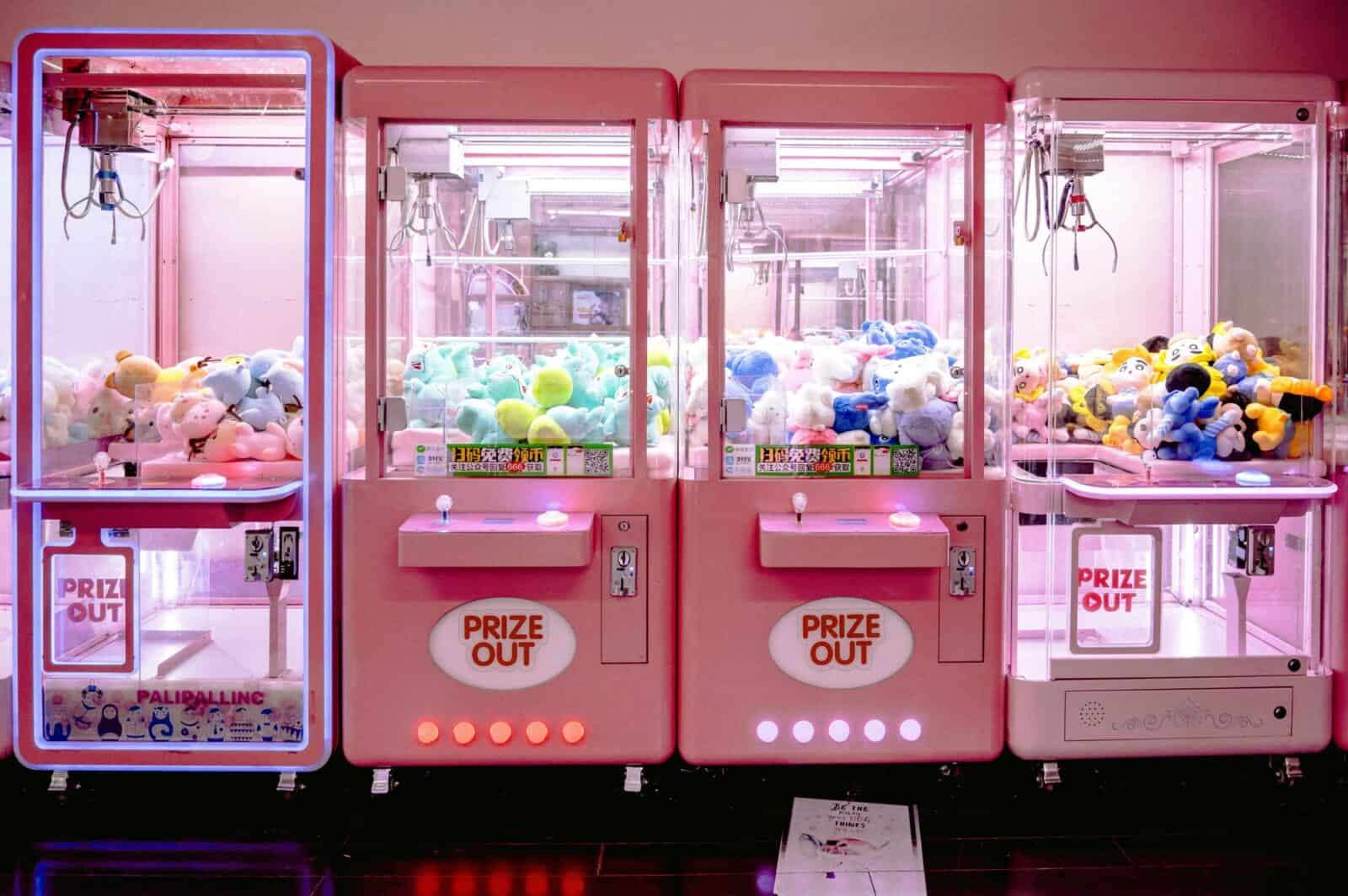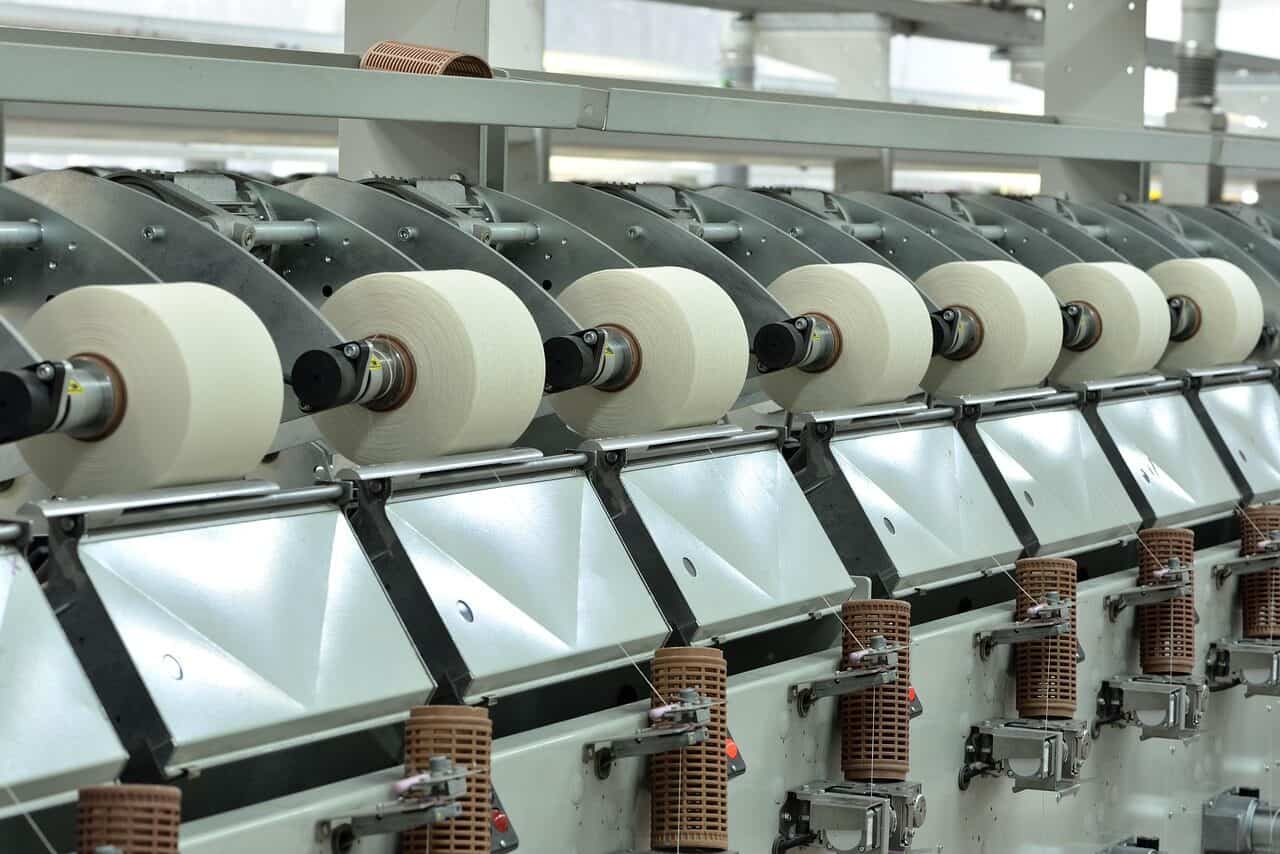La fabrication du chocolat : Un guide complet de la fabrication du chocolat

Vous êtes-vous déjà demandé comment les fèves de cacao amères se transforment en barres de chocolat onctueuses et délicieuses ? Cette transformation étonnante est un mélange parfait de science, d'art et d'ingénierie intelligente. Le marché mondial du chocolat représente plus de 130 milliards de dollars, ce qui montre à quel point les gens du monde entier aiment le chocolat. Mais la plupart des gens ne savent pas comment le chocolat est réellement fabriqué dans les usines. Ce guide explique tout sur la fabrication du chocolat, du début à la fin. Il s'adresse aux chefs d'entreprise, aux entrepreneurs et aux personnes travaillant dans l'industrie du chocolat. Nous examinerons chaque étape de la fabrication du chocolat, depuis le choix des meilleures fèves jusqu'à l'emballage du produit final. Vous découvrirez des astuces d'experts et des conseils pratiques. Ce guide vous aidera à comprendre l'ensemble du processus de fabrication du chocolat industriel, y compris les principales techniques, les machines, le contrôle de la qualité et les prochaines évolutions du secteur.
Connaissances de base nécessaires
Avant d'apprendre à fabriquer du chocolat, les fabricants doivent en connaître les principaux ingrédients. La qualité du chocolat final est décidée bien avant que l'usine ne commence à travailler. Tout commence par le choix de la bonne fève et la connaissance des différents types de produits chocolatés.
Pourquoi les fèves de cacao sont-elles si importantes ?
L'idée du “bean-to-bar” (de la fève à la barre) consiste à contrôler chaque étape, en commençant par les fèves de cacao brutes. Le choix de la bonne fève est la première et la plus importante décision dans la fabrication du chocolat. Chaque type de fève donne au chocolat un goût de base différent.
- Criollo : C'est ce qu'on appelle le haricot “de saveur”. Les grains Criollo sont rares, chers et difficiles à cultiver. Les gens les aiment parce qu'ils ont des odeurs et des saveurs complexes, notamment des notes de noix, de caramel et de fruits rouges. Elles sont généralement utilisées dans les chocolats coûteux et raffinés.
- Forastero : C'est le cheval de bataille de la fabrication du chocolat, utilisé dans plus de 80% de toute la production de chocolat dans le monde. Il s'agit d'une fève forte, à forte production, au goût puissant et plein, qui peut parfois être amer. La plupart des chocolats de tous les jours le chocolat est fabriqué de ce haricot.
- Trinitario : Ce grain est un mélange naturel de Criollo et de Forastero, offrant le meilleur des deux types. Il combine la force et la production élevée du Forastero avec le goût raffiné du Criollo, ce qui en fait un bon choix pour de nombreux chocolatiers.
Guide des différents types de chocolat
Chaque type de produit chocolaté est défini juridiquement et techniquement par son contenu. En tant que fabricant, il est essentiel de comprendre ces catégories pour créer des recettes et respecter les règles d'étiquetage.
- Chocolat noir : Fabriqué à partir de liqueur de chocolat, de beurre de cacao, de sucre, d'un émulsifiant comme la lécithine et de vanille. Il ne contient pas de lait. Le pourcentage de solides de cacao (liqueur de chocolat plus beurre de cacao ajouté) est souvent utilisé dans le marketing, allant généralement de 50% à plus de 90%.
- Chocolat au lait : Il contient les mêmes ingrédients que le chocolat noir, plus des extraits secs de lait ou de la poudre de lait. Il a une texture plus crémeuse et un goût plus sucré parce qu'il contient moins de cacao et du lait.
- Chocolat blanc : Techniquement, ce n'est pas du vrai “chocolat” car il ne contient pas de liqueur de chocolat ni de cacao. Il est fabriqué à partir de beurre de cacao, de sucre, de solides de lait, de lécithine et de vanille. Sa qualité dépend fortement de la qualité du beurre de cacao.
- Chocolat rubis : Le type le plus récent, introduit en 2017. Il est fabriqué à partir de fèves de cacao spéciales “rubis” et a un goût unique décrit comme un mélange de baies et de fruits et de douceur. Sa couleur rose provient naturellement de la fève au cours de la transformation.
Le processus principal

La fabrication du chocolat industriel est une série d'étapes précises et contrôlées. Si les petits artisans peuvent varier leurs méthodes, la production à grande échelle doit être cohérente à chaque fois. Ce guide en neuf étapes présente le processus standard qui transforme les fèves brutes en chocolat fini.
Étape 1 : Récolte et fermentation
Le voyage commence là où pousse le cacao. Les cabosses de cacao sont cueillies à la main lorsqu'elles sont mûres. Les ouvriers ouvrent les cabosses à l'aide de machettes et en extraient les fèves, qui sont recouvertes d'une pulpe blanche et charnue. Ces fèves et cette pulpe sont ensuite placées dans de grandes caisses en bois ou empilées et recouvertes. Pendant plusieurs jours, de minuscules organismes présents dans la pulpe commencent à fermenter. Il ne s'agit pas seulement d'éliminer la pulpe, c'est une étape cruciale au cours de laquelle les arômes qui deviendront le chocolat sont créés pour la première fois.
Étape 2 : Séchage et mise en sac
Après la fermentation, les haricots contiennent environ 60% d'eau. Elles doivent être séchées pour éviter les moisissures et être prêtes pour le stockage et l'expédition. Les haricots sont étalés sur de grands plateaux ou sur des terrasses au soleil et ratissés régulièrement pour qu'ils sèchent uniformément. Dans les environnements plus industriels ou les lieux humides, des séchoirs mécaniques sont utilisés. L'objectif est de réduire la teneur en eau à environ 7,5%. Une fois séchées, les fèves sont mises dans des sacs de jute pour être expédiées vers les usines de fabrication de chocolat du monde entier.
Étape 3 : Torréfaction
Lorsque les fèves arrivent à l'usine, le premier changement important se produit lors de la torréfaction. Les fèves sont torréfiées dans de grands fours à tambour ou à boule à des températures soigneusement contrôlées, généralement comprises entre 120°C et 160°C. La torréfaction a plusieurs effets importants : elle tue les bactéries restantes, réduit encore davantage l'humidité et, surtout, développe la riche saveur et l'odeur du chocolat. C'est là que se produit la réaction de Maillard, une réaction chimique entre les acides aminés et les sucres qui crée des centaines de nouveaux composés aromatiques.
Étape 4 : Vannage et plumes
Les grains torréfiés sont maintenant fragiles et faciles à casser. Elles passent dans une machine à vanner, qui les réduit d'abord en petits morceaux. Un système de tamis et de courants d'air sépare ensuite l'enveloppe extérieure légère et papilleuse (la coque) de l'amande intérieure dense (l'amande de cacao). La coque a une utilisation limitée, parfois vendue comme paillis ou pour le thé, tandis que le grain de cacao est l'ingrédient pur et essentiel de tout chocolat.
Étape 5 : Transformation en liqueur
Les fèves de cacao, qui contiennent environ 50-55% de beurre de cacao, sont introduites dans un broyeur. Les machines les plus courantes sont les broyeurs à pierre, les broyeurs à billes ou les broyeurs à disques. La pression et la friction intenses du broyage créent de la chaleur qui fait fondre le beurre de cacao à l'intérieur des grenailles. Les grains solides se transforment alors en une pâte épaisse, noire et non alcoolisée, appelée liqueur de chocolat ou masse de cacao. Cette liqueur pure est le cœur du chocolat.
Étape 6 : Mélanger et affiner
À ce stade, la liqueur de chocolat est mélangée à d'autres ingrédients selon une recette spécifique. Pour le chocolat noir, on ajoute du sucre. Pour le chocolat au lait, on ajoute du sucre et du lait en poudre. Un supplément de beurre de cacao est souvent ajouté pour que le chocolat soit plus agréable en bouche et qu'il coule mieux. Ce mélange grossier est ensuite passé dans une série de rouleaux d'acier robustes, appelés raffineurs à trois ou cinq rouleaux. Ce processus réduit les particules de sucre et de cacao à une taille incroyablement petite, généralement de 15 à 25 microns, ce qui est plus petit que ce que la langue humaine peut détecter. Cette étape est cruciale pour obtenir une texture soyeuse et lisse.
Étape 7 : L'art du conchage
Le conchage est l'une des étapes les plus importantes de la fabrication du chocolat. Le mélange de chocolat raffiné est placé dans une conche, une machine équipée de grands mélangeurs qui remuent, pétrissent et ajoutent de l'air au chocolat à des températures élevées. Ce processus peut durer de quelques heures à plus de 72 heures. Du point de vue d'un expert, c'est à ce moment-là que le chocolat prend véritablement vie. Au début, l'odeur est piquante et acide. Au fur et à mesure que le conchage se poursuit, ces acides agressifs s'évaporent et le parfum se transforme en un arôme de chocolat riche et complexe. La texture passe d'une pâte légèrement granuleuse à un liquide lisse et fluide. Le conchage achève le développement des arômes, élimine toute humidité résiduelle et enrobe chaque particule solide de beurre de cacao, créant ainsi l'épaisseur et la sensation en bouche finales.
Étape 8 : La science de la trempe
Le tempérage est un processus précis de chauffage et de refroidissement du chocolat liquide à des températures spécifiques. Cela permet de contrôler la façon dont le beurre de cacao se cristallise. Le beurre de cacao peut se solidifier sous six formes cristallines différentes, mais une seule, le cristal Beta V, donne les qualités que nous recherchons dans une tablette de chocolat finie. Un bon tempérage favorise la formation d'un réseau dense de ces cristaux Beta V stables. C'est ce qui donne au chocolat de haute qualité son aspect brillant, son “claquement” satisfaisant lorsqu'il est cassé et sa texture lisse et fondante qui ne donne pas l'impression d'être cireuse.
Étape 9 : Moulage et refroidissement
La dernière étape consiste à donner sa forme au chocolat. Le chocolat liquide, parfaitement tempéré, est coulé dans des moules de différentes formes : barres, copeaux, bonbons ou autres figurines. Les moules sont ensuite passés sur une table vibrante afin d'éliminer les bulles d'air emprisonnées et d'obtenir une surface lisse et uniforme. Enfin, les moules traversent un long tunnel de refroidissement où la température est soigneusement contrôlée pour permettre au chocolat de se solidifier complètement. La structure cristalline stable du Beta V est ainsi maintenue en place, ce qui préserve le tempérament et garantit une longue durée de conservation. Le chocolat fini et solide est ensuite démoulé et envoyé à l'emballage.
Équipement essentiel
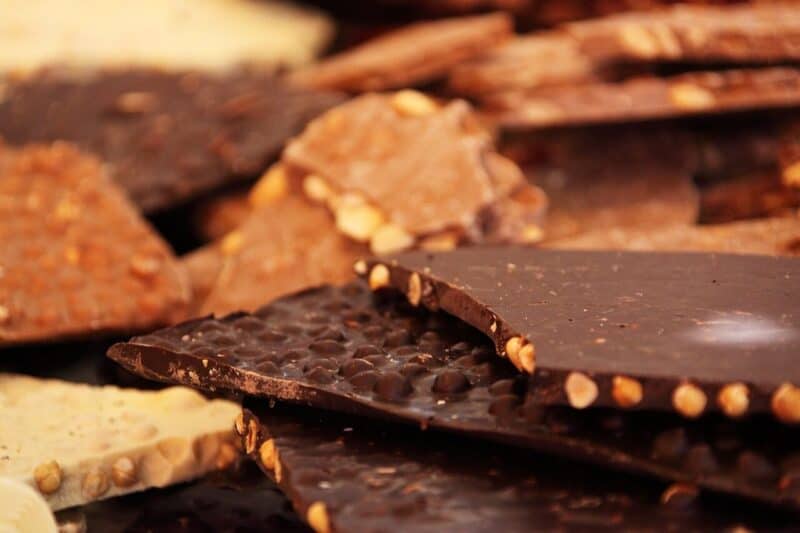
Faire passer la fabrication du chocolat d'une cuisine à une usine nécessite un investissement important dans des machines spécialisées. Chaque équipement est conçu pour réaliser une étape spécifique avec précision et cohérence, ce qui permet à la production industrielle de fonctionner. Le bon équipement ne sert pas seulement à produire plus de chocolat, il sert aussi à contrôler la qualité du produit final.
Tableau 1 : Équipement de fabrication
Le tableau suivant présente les principales machines nécessaires à la réalisation d'un bean-to-bar standard ligne de production, Chaque pièce est reliée à sa fonction importante dans le processus.
| Stade | Equipement | Fonction principale |
| Grillage | Rôtissoire à tambour / Rôtissoire à billes | Développe la saveur et l'arôme grâce à un chauffage contrôlé. |
| Vanner | Vanneuse / Craqueur & Séparateur | Sépare le grain de cacao de l'enveloppe extérieure. |
| Broyage | Broyeur de pierres / Broyeur à billes | Broie les pépites pour en faire une liqueur de chocolat liquide. |
| Raffinage | Affineur à trois/cinq rouleaux | Réduit la taille des particules de sucre et de cacao pour une texture lisse. |
| Conchage | Conche longitudinale / Conche rotative | Affine la saveur et la texture grâce à un mélange et une aération prolongés. |
| Trempe | Machine de trempage / bouilloire de trempage | La température est contrôlée avec précision pour former des cristaux de beurre de cacao stables. |
| Moulage | Déposeur et ligne de moulage | Verser le chocolat tempéré dans les moules à un volume constant. |
| Emballage | Enveloppeuse de flux / Enveloppeuse de film | Automatise la l'emballage du chocolat fini produits. |
Augmentation de la production
Passer du statut de petit artisan à celui de fabricant à l'échelle industrielle est l'une des étapes les plus difficiles à franchir pour une entreprise en pleine croissance. Il ne s'agit pas simplement d'acheter de plus grosses machines, mais de changer radicalement de mentalité, de processus et de logistique.
Une autre façon de penser
La fabrication artisanale du chocolat est souvent synonyme de découverte. L'objectif est de mettre en valeur les notes de goût uniques et subtiles d'une fève d'origine unique, tout comme un vigneron exprime le caractère d'un vignoble. La fabrication industrielle du chocolat, en revanche, est axée sur la fiabilité. L'objectif principal est de fabriquer un produit qui a exactement le même goût aujourd'hui qu'hier et qu'il aura demain, quelles que soient les petites modifications apportées aux matières premières. L'accent n'est plus mis sur la célébration de l'unicité, mais sur l'ingénierie de la constance.
Éléments à prendre en compte lors de la transposition à plus grande échelle
Pour réussir à passer à l'échelle supérieure, il faut une planification minutieuse dans plusieurs domaines clés :
- Gestion de la chaîne d'approvisionnement : Un artisan peut acheter quelques sacs d'un haricot Criollo rare. Un producteur industriel doit obtenir des contrats pour des centaines de tonnes de fèves, souvent des mélanges, qui répondent à des exigences strictes en matière de saveur, de teneur en matières grasses et de taille des fèves.
- Automatisation des processus : Les tâches manuelles telles que le tri des haricots ou le démoulage des barres deviennent des goulots d'étranglement. La mise à l'échelle nécessite l'automatisation des processus de production. les lignes où circulent les processus en douceur d'une machine à l'autre avec un minimum d'aide humaine.
- Cohérence et contrôle de la qualité : Les tests en laboratoire et les panels de dégustation deviennent absolument nécessaires. Des procédures de contrôle de la qualité strictes et fondées sur des données doivent être mises en place à chaque étape afin de garantir que le produit final est conforme aux normes de qualité. le produit rencontre la marque normes.
- L'investissement monétaire : Le saut financier est énorme. Un broyeur à petite échelle peut coûter quelques milliers de dollars, alors qu'une ligne industrielle complète de raffinage et de conchage peut coûter des millions.
Tableau 2 : Artisanat et industrie
Ce tableau présente une comparaison claire des principales différences entre la fabrication de chocolat à petite échelle et la fabrication de chocolat à grande échelle.
| Aspect | Artisan (petite production) | Industrie (grande échelle) |
| Approvisionnement en haricots | Origine unique, commerce direct, concentration sur un terroir unique. | Mélanges de haricots en vrac (par exemple, Forastero) pour des raisons de cohérence et de coût. |
| Machines | Des machines plus petites, souvent polyvalentes (par exemple, des broyeurs de pierres). | Grandes lignes automatisées spécialisées à fonction unique. |
| L'accent mis sur le processus | Développement de la saveur, mettant en évidence les caractéristiques uniques des haricots. | Efficacité, rapidité et cohérence absolue du produit final. |
| Taille du lot | 10kg - 100kg | 1 000 kg - 50 000 kg et plus |
| Flexibilité | Élevée (facile de créer des éditions limitées). | Faible (modifier une recette est une entreprise de grande envergure). |
| Défi majeur | Évolutivité et gestion des coûts. | Maintien de la qualité à l'échelle et logistique de la chaîne d'approvisionnement. |
Garantir l'excellence
Dans la fabrication du chocolat, la qualité n'est pas une inspection finale ; c'est une façon de penser qui est intégrée à chaque étape du processus. Une seule défaillance à n'importe quelle étape peut ruiner l'ensemble du lot. Un solide programme de contrôle de la qualité (CQ) est l'épine dorsale de toute opération de fabrication réussie, car il garantit la sécurité et la cohérence du produit, ainsi que la satisfaction du client.
De la matière première au produit final
Efficace le contrôle de la qualité commence avant la production commence par une inspection minutieuse de toutes les matières premières entrantes - fèves de cacao, sucre, lait en poudre et beurre de cacao. Elle se poursuit par une série de points de contrôle tout au long de la chaîne de fabrication, de la torréfaction à l'emballage. Cette approche complète permet de prévenir les défauts plutôt que de les détecter.
Tableau 3 : Points de contrôle de la qualité
Les points de contrôle ci-dessous sont essentiels pour tout fabricant professionnel de chocolat. Ils associent des tests de dégustation à une analyse objective, fondée sur des données, afin de maintenir les normes les plus élevées.
| Stade | Vérification du CQ | Paramètres testés | Importance |
| Fèves de cacao crues | Test sensoriel et physique | Teneur en eau, nombre de grains, moisissure/infestation, arôme. | Empêche les matières premières de mauvaise qualité d'entrer dans la production. |
| Grillage | Test de couleur et de goût | Mesure de la couleur (spectrophotomètre), évaluation sensorielle. | Garantit un développement cohérent des arômes et évite les notes brûlées. |
| Raffinage | Analyse de la taille des particules | Mesure à l'aide d'un micromètre ou par diffraction laser. | Garantit la douceur et la sensation en bouche souhaitées. |
| Trempe | Analyse des compteurs de température | Mesure l'indice de température (taux de cristallisation). | Confirme la bonne formation des cristaux pour la brillance, l'éclat et la stabilité. |
| Produit fini | Panel sensoriel et tests de laboratoire | Goût, texture, arôme, apparence, viscosité, numération microbienne. | Vérification finale de la qualité, de la sécurité et de la durée de conservation du produit. |
Applications industrielles

La barre de chocolat en est la forme la plus connue, chocolat fabriqué industriellement est un ingrédient polyvalent qui sert de base à de nombreuses autres industries alimentaires. Les propriétés du chocolat - son épaisseur, son point de fusion et son profil aromatique - sont soigneusement conçues pour répondre aux besoins spécifiques de ces applications.
Au-delà du bar
- Confiserie : Le chocolat est un composant principal pour l'enrobage des truffes, des bonbons, des caramels et des noix. Le chocolat de couverture, dont la teneur en beurre de cacao est plus élevée, est préféré pour cette application en raison de sa fluidité et de sa finition supérieures.
- Boulangerie et pâtisserie : Dans le monde de la boulangerie, le chocolat est utilisé dans tous les domaines, des gâteaux aux brownies en passant par les mousses et les glaçages. Les boulangers ont besoin de chocolats présentant des caractéristiques spécifiques, comme des pépites stables à la cuisson qui conservent leur forme ou des ganaches ayant un temps de prise spécifique.
- Crème glacée et desserts glacés : Le chocolat est utilisé pour créer des enrobages durs pour les barres de crème glacée, sous forme de mélanges comme des copeaux ou des flocons, et comme base d'arôme pour la crème glacée elle-même. La recette doit être adaptée pour fonctionner correctement à des températures de congélation.
- Boissons : L'industrie des boissons utilise le chocolat sous diverses formes. La poudre de cacao est la base des boissons chaudes chocolat Les sirops de chocolat sont essentiels pour les cafés et les garnitures de desserts. Les liqueurs de chocolat s'appuient également sur des bases d'arômes de chocolat de haute qualité.
- Applications salées : Une spécialité de plus en plus répandue dans la cuisine gastronomique consiste à utiliser le chocolat non sucré ou à haute teneur en cacao dans les plats salés. L'exemple le plus célèbre est la sauce mole mexicaine traditionnelle, à laquelle le chocolat donne de la profondeur, de la couleur et de la complexité.
L'avenir du chocolat
L'industrie du chocolat, bien que fondée sur la tradition, ne reste pas inchangée. Elle connaît actuellement de profondes mutations liées aux attentes des consommateurs, aux nouvelles technologies et à une prise de conscience mondiale croissante. Pour les fabricants, rester à l'avant-garde de ces tendances est la clé du succès à long terme.
L'innovation dans la tradition
- Durabilité et traçabilité : Les consommateurs veulent de plus en plus savoir d'où viennent leurs aliments. Le mouvement en faveur d'un cacao d'origine éthique, sans esclavage et écologiquement durable modifie les chaînes d'approvisionnement. Des technologies telles que la blockchain sont utilisées pour assurer un suivi transparent de la fève à la barre, offrant un nouveau niveau d'assurance aux consommateurs et aux fabricants.
- Automatisation et industrie 4.0 : La prochaine vague d'efficacité manufacturière est arrivée. Des systèmes alimentés par l'IA et des capteurs IoT (Internet des objets) sont intégrés aux lignes de production pour surveiller en temps réel des variables telles que les températures de torréfaction, les durées de conchage et la taille des particules. Cela permet d'obtenir une précision inégalée, de réduire les déchets et d'optimiser l'utilisation de l'énergie.
- Formulations soucieuses de la santé : La demande de chocolat “meilleur pour la santé” augmente rapidement. Cela signifie qu'il faut se concentrer sur les produits à faible teneur en sucre ou sans sucre, en utilisant des édulcorants alternatifs comme la stévia ou l'érythritol. Le chocolat noir à haute teneur en cacao (75%+) est commercialisé pour ses propriétés antioxydantes. En outre, le chocolat fonctionnel avec des avantages supplémentaires tels que les protéines, les fibres ou les probiotiques est une catégorie en pleine expansion qui nécessite une recherche et un développement importants.
- Chocolat végétal et végétalien : Alors que de plus en plus de consommateurs adoptent des régimes à base de plantes, la demande de chocolat végétalien de haute qualité a explosé. Cela pose un problème de fabrication : remplacer le lait en poudre par des alternatives telles que le lait d'avoine, d'amande ou de riz en poudre, tout en conservant la texture crémeuse et la saveur équilibrée que les consommateurs attendent du chocolat au lait traditionnel.
Conclusion

Comme nous l'avons vu, la transformation de la fève de cacao en un produit fini est un processus complexe. Le produit chocolaté est le fruit d'un processus minutieux en neuf étapes, Chaque étape, de la torréfaction au tempérage, joue un rôle essentiel. Le succès de la production de chocolat dépend d'une compréhension approfondie de ce processus, d'un investissement dans l'équipement adéquat et d'un engagement inébranlable en faveur du contrôle de la qualité. Le voyage exige de maîtriser à la fois l'art du développement des arômes et la science de l'ingénierie des procédés. Qu'il s'agisse de développer une marque artisanale ou d'optimiser une installation à grande échelle, la maîtrise de ces principes est la clé de la création d'un chocolat qui ravit constamment les consommateurs et se distingue sur un marché concurrentiel.
Foire aux questions (FAQ)
Q1 : Quelle est la différence entre la liqueur de chocolat et la poudre de cacao ?
R : La liqueur de chocolat est la pâte liquide et pure obtenue à partir de fèves de cacao broyées, contenant à la fois des extraits secs de cacao et du beurre de cacao (généralement de l'ordre de 50-55% de matière grasse). La poudre de cacao est créée lorsque la majeure partie du beurre de cacao est extraite de la liqueur de chocolat à l'aide d'une presse hydraulique. Le “gâteau” solide restant est ensuite broyé en une fine poudre.
Q2 : Pourquoi la trempe est-elle si difficile et si importante ?
R : Le tempérage est essentiel car il permet d'aligner les cristaux du beurre de cacao en une forme unique et stable (Beta V). C'est ce qui donne au chocolat son aspect brillant, son craquement satisfaisant et son fondant lisse. Le tempérage est difficile car il nécessite un contrôle précis de la température. Un mauvais tempérage donne un chocolat terne et friable qui fond trop facilement sur les doigts et peut développer une couche blanchâtre appelée “fleur de graisse”.”
Q3 : Combien de temps dure le processus de fabrication du chocolat ?
R : Le délai varie considérablement en fonction de l'échelle et de l'approche. La fermentation et le séchage à la ferme peuvent prendre une à deux semaines. À l'usine, le processus qui va de la torréfaction des fèves à l'obtention d'une barre finie et emballée peut durer de 24 à 72 heures. Le conchage est souvent l'une des étapes individuelles les plus longues, pouvant parfois durer plus d'une journée pour les chocolats haut de gamme.
Q4 : Puis-je créer une petite entreprise de fabrication de chocolat à partir de mon domicile ?
R : Oui, de nombreux fabricants de “bean-to-bar” qui réussissent commencent avec un équipement à petite échelle dans un espace dédié. Les éléments clés du démarrage comprennent un petit torréfacteur (comme un torréfacteur de café modifié), un vireur et un moulin à pierre (souvent appelé "melanger"). Il est toutefois essentiel de se conformer à toutes les réglementations locales en matière de sécurité alimentaire et de licences pour la production alimentaire commerciale, qui peuvent être strictes.
Liens de référence:
- FDA - Code of Federal Regulations Title 21 (Cacao Products) https://www.fda.gov/
- FDA - Code électronique des réglementations fédérales (21 CFR Part 163) https://www.ecfr.gov/
- FSSC 22000 - Certification du système de sécurité alimentaire https://www.fssc22000.com/
- ISO 22000 - Systèmes de management de la sécurité des denrées alimentaires https://www.iso.org/
- Wiley Online Library - Sécurité alimentaire dans la fabrication du chocolat https://onlinelibrary.wiley.com/
- IntechOpen - Recherche sur la transformation du chocolat et la sécurité alimentaire https://www.intechopen.com/
- ResearchGate - Documents de recherche sur la fabrication du chocolat https://www.researchgate.net/
- Wikipedia - Chocolat https://en.wikipedia.org/wiki/Chocolate
- ScienceDirect - Science alimentaire et transformation du chocolat https://www.sciencedirect.com/
- Registrar Corp - Conformité à la FDA pour les fabricants de produits alimentaires https://www.registrarcorp.com/

